Lancashire Heeler
In my own words
Look at that cat all on its own! It needs to be part of the herd don’t you think? I’m a herding dog, I can’t help but want to round things up. Mind I don’t snap at your heel, I’m not being vicious but shouldn’t you be in the herd? Did you know I’m the smallest English herding dog? Just because I’m little doesn’t mean I can’t herd well! Would you like a demonstration? Allow me to round up the postman for you...
Shall we go out for a walk now? I’ll go get my lead! I’m really versatile you know, my kind has been used for herding, ratting, retrieving... Everything! Some of us even work as therapy dogs, isn’t that nice? I can turn my paw to just about any job so if you need something doing, I’m your dog! Oh, did you hear that? I think it’s the postman. Excuse me while I go have a word with his heel...
My ideal owner(s)
High-energy, active owners
Homeowners with fenced-in yards
Families with older children
Those looking for a versatile canine worker
Folks who like to be carry a herding dog in a purse
What they say about me
Affectionate
Agile
Energetic
Loyal
Athletic
Please read on, to find out more about me, and whether I will be someone you can be happy with for the next 13 years, or even longer!
Is this Lancashire Heeler for you?
Test your knowledge about the Lancashire Heeler
Information essential about the Lancashire Heeler
Kennel Club Group:
Foundation Stock Service
Category:
Versatility in jobs including retrieving, herding and ratting
Size:
Small: Weight Male 13 lb (5.9 kg) Female 7 lb (3.2 kg)
Height Male 12” (30.5 cm) Female 10” (25.4 cm)
Popularity:
The Lancashire Heeler is a small breed, listed with the Kennel Club as a “vulnerable native breed” – a breed native to the UK which has less than 300 birth registrations per year. This breed has gained popularity in the US, Sweden, the Netherlands and Australia
Breed History:
This breed has been in existence since the 17th century and is thought to be a cross between the Welsh Corgi and Manchester Terrier and possibly the Dachshund or other breeds. Some aficionados claim this breed is actually the ancestor of the Welsh Corgi. This breed was in decline but was regenerated in the 1960s and the Lancashire Heeler Club was established in Britain in 1978.
The breed was developed as a herder and driver of cattle and sheep. They are the smallest of the English herding dogs and are also adept at hunting and catching both rabbits and rats. The Lancashire Heeler was recognised by the Kennel Club in 1981 but as numbers have declined it has been placed on the KC’s “vulnerable native breeds” list. A number of dedicated breeders are trying to save this dog from possible extinction but in 2007 only 146 were registered with the Kennel Club. Today this breed continues to be used as a working dog and companion.
Character:
The Lancashire Heeler breed is sturdy, strong, hardy and well-built. This breed is agile, athletic, quick-witted and energetic. They are extremely hardworking and alert dogs. They are affectionate and loyal, doing best in a home with older, considerate children. They do well with other dogs and household pets. They can be wary and suspicious of strangers and will alert their family to visitors and danger.
Temperament:
This breed is intelligent yet stubborn. They will learn new commands and obedience training very easily provided they want to as they have a stubborn streak. These delightful dogs are independent yet incredibly loyal with a sunny and playful disposition. This breed is often used as PAT therapy dogs in hospices and nursing homes. This breed can have a nervous disposition and is not always well suited to households with other pets and young children but early socialisation is recommended to help calm their nervous tendency.
Conformation:
The strength and sturdiness of this breed makes up for its small size. The dog’s length is longer than its height, hence the theory of Dachshund ancestry. The tail reflects this dog’s cheery personality and curves jauntily over its backend. The Lancashire Heeler often appears to smile when its mouth is slightly open and its lipped are pulled back. The tail is thick and flows smoothly from its straight back. This breed is well-muscled and has strong legs with outward turned front feet. The ears are either pricked or tipped and the skull is broad and smooth. The eyes are moderately sized and a dark, almond shaped.
Coat:
The coat is short, hard and flat. This is a double coat breed. The outer coat is weather-resistant and thick whereas the undercoat is fine in texture. The hair around the neck is slightly longer.
Colour:
The coat comes in black and tan or liver and tan which was approved in 1999.
Training:
This breed may attempt to herd family members, including cats. These dogs are easily trained but can be stubborn so need training which is patient and firm. They can be nervous, especially when not exercised sufficiently and need proper socialisation with pets and people from a young age. This herding breed needs to be taught not to nip and herd people and require a dominant handler with clear leadership. They do not response well to harsh, heavy-handed training but respond well to fairness and consistency. Training this dog can often be a battle of wills but always try to be positive and encouraging when training this breed as they will remember negative behaviour in the future.
Care:
The Lancashire Heeler requires weekly brushing with a wire brush and bathing should be done only when necessary. This breed sheds seasonally in Spring and Autumn. Some owners use a washing up glove or grooming mitt, running their hand over the length of the body to remove dead or loose hairs easily – doing this once or twice a week is sufficient. This small dog has a fairly large exercise requirement and needs a good long walk at least once a day to keep it fit, healthy and stimulated
This breed will do okay in an apartment provided they are sufficiently exercised and given proper mental stimulation. They love walks provided they are securely on the lead and enjoy free play in a securely fenced yard along with herding and family activities. They have a strong instinct to round and herd and will attempt to herd children, the postman or any other animal. They herd by snapping at the heel and it can be difficult to overcome this breed’s herding instinct but this behaviour can be channelled into other activities such as flyball, agility and trailing all of which the Lancashire Heeler will relish. This breed has fairly large exercise requirements despite its small size and needs a good long walk at least once a day to stay fit and healthy.
Health:
The lifespan of a healthy individual is between 12 and 13 years, however, some live for as long as 15 years. If you buy from a reputable, responsible breeder, health problems should not occur. This breed is prone to health issues such as Collie Eye Anomaly (CEA), patella luxation and primary lens luxation. Collie Eye Anomaly is an inherited and congenital disease which affects certain parts of the eye. It is usually a mild disease that does not disadvantage the dog, however, breeders use DNA testing to ensure their dogs do not produce pups with the disease. Due to their long back and short legs, this breed can be prone to back injury mainly caused by jumping down from furniture, the car or flights of stairs. Such injury can be easily prevented by owner observation and discouraging it from being in the situation in the first place.
You may also like:
If you like Lancashire Heelers, you may be interested in breeds of the same size »
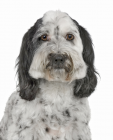

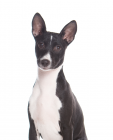
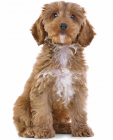
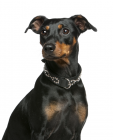
If you like Lancashire Heelers, you may like other breeds with similar characteristics »
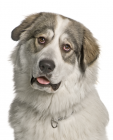
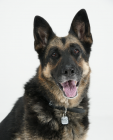
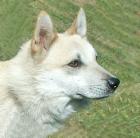
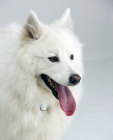
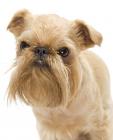
Advice on choosing your breed »
Find an animal shelter or rescue home where a Lancashire Heeler is waiting for a new home »
The following grid gives a fast track review which covers all breeds. You can apply it to help you decide if a Lancashire Heeler is suitable for you, the environment where you live, your personality and your lifestyle. On the grid, 1= strongly disagree, and 5= strongly agree. For example, if you are looking for a dog that likes to run, look down the list under Activities, and you will see that Lancashire Heelers love running and walking, scoring 5. If you want a playful companion, look down the same list, and you will see that Lancashire Heelers love to fetch and hunt, and score 5. You might like to save or print off this section and keep it for reference while you check some other breeds before making your final choice.
Be the first to rate this breed »
|
*PLEASE NOTE: All our breed profiles are general, and all dogs are individuals. Always talk to the breeders and meet the owners you are buying from. Try to meet the dog and its parents if it is a puppy in their home environment.










